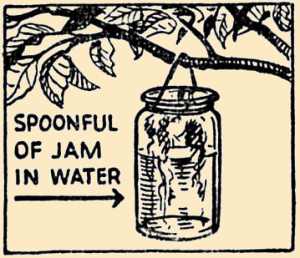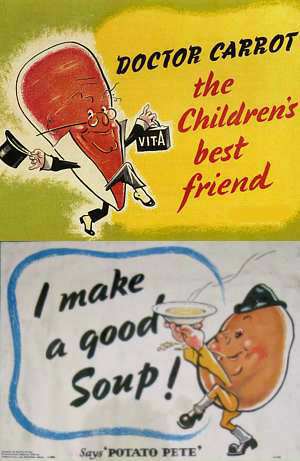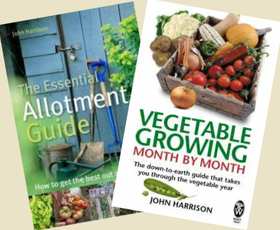Sow SPINACH . . . the real thing
Clever cooks, it is said, can make any vegetable into spinach. But, as with so much that cooks “make,” the concoction cannot provide the health-giving benefits of the real thing. And more important, the real thing tastes better.
 For winter use, sow the prickly or rough-seeded variety thinly in drills 1 in. deep and 1 foot. apart. If possible, avoid full sun.
For winter use, sow the prickly or rough-seeded variety thinly in drills 1 in. deep and 1 foot. apart. If possible, avoid full sun.
Thin to 3 in., then to 6 in. apart as plants develop. The best flavoured plants are fairly big, with broad, crisp leaves about the size of a saucer—this means proper attention to thinning.
WASPS
 Adjectives may relieve but they do not reduce the battalions. Traps do, especially if hung among the plum trees.
Adjectives may relieve but they do not reduce the battalions. Traps do, especially if hung among the plum trees.
The only satisfactory way of dealing with wasps where they are causing damage to fruit is to find the nests in the neighbourhood and kill the colonies by poisoning.
There are various materials that can be used to destroy wasps in their nests. Some are dangerous in in-expert hands but ground Derris root is safe and is effective and simple to use. Put a dessert-spoonful of the powder as far into the entrance of the nest as possible, and also sprinkle a little round the entrance so that the wasps will get it on their feet and feelers when entering or leaving the nest.
Some people use tar, creosote, or paraffin successfully. The liquid must be poured well into the nest or a soaked rag or piece of sacking pushed in by means of a stick.
Please see this page on Insecticides then and now. Creosote is not available to the public although it is for professional use.
The best time for dealing with wasps’ nests is at dusk when most of the workers are inside. If desired, the nests may be dug out on the following day and destroyed by burning.
Trapping by means of jam-jars hung among the trees helps to reduce the population but is only a palliative. The jars should be half to three-quarters full of water into which a spoonful of jam has been stirred or a little stale beer added.


